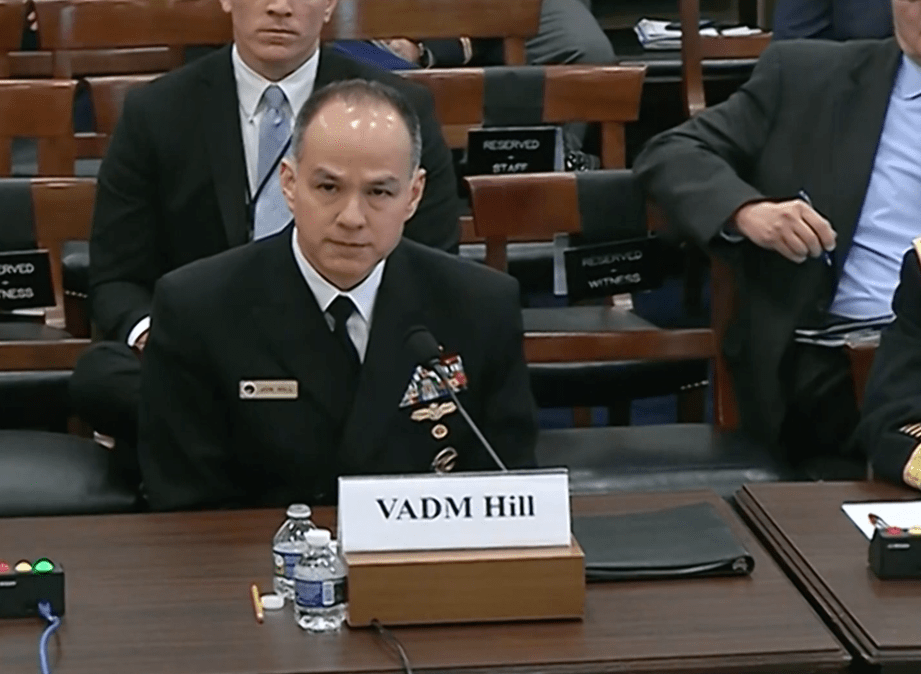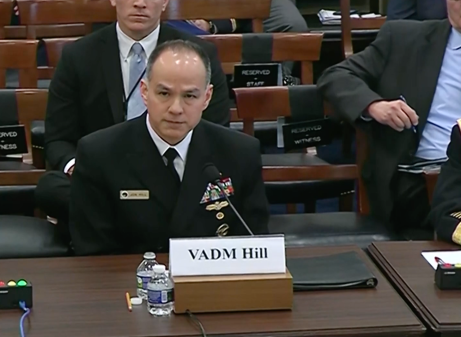MDA director unsure if new hypersonic missile interceptor can be fielded before 2030

Under pressure to develop new capabilities for countering adversaries’ hypersonic weapons, the head of the Missile Defense Agency said he isn’t ready to commit to a timeline for delivering a new glide phase interceptor (GPI).
On Monday, MDA Director Vice Adm. Jon Hill was asked if the system will be ready in the 2020s and whether additional funding would help the agency accelerate the schedule for the weapon.
“We argue this all the time, right. You’ll have one program manager tell you, ‘Hey, this is going to be a 2030s thing.’ You have others that say, ‘Why can’t you have it now? You know, all you need is a kick stage and you’re there,’” Hill said at an event hosted by the Center for Strategic and International Studies. “And so I would say again, we’re a little bit too early for me to declare a timeline. Having been a program manager, when you’re in the area where you’re bringing the technology together and you haven’t even decided on what the configuration is, there’s lots of trades that have to be done.”
The Missile Defense Agency requested about $225 million for counter-hypersonics technologies in fiscal 2023, which included funding for the GPI program.
MDA also included $318 million for these types of capabilities in its unfunded priorities list that it submitted to Congress, according to Roll Call.
This kind of program will “take time to bake,” Hill said. “We’re just getting started.”
Adversaries such as Russia and China are developing hypersonic missiles. Such weapons are expected to be highly maneuverable and travel at speeds greater than Mach 5. A new glide phase interceptor is needed to address the threat, Pentagon officials say.
“That takes you up to the most vulnerable place where a [hypersonic] glide vehicle flies. It’s bleeding off heat. That’s where it starts its lateral maneuvers. We need to kill it there” before it reaches its terminal phase where defending against it is more challenging, Hill said.
A number of technologies need to come together for the interceptor to survive and operate effectively in that kind of environment.
“Operating in space, that’s one environment. Operating in the atmosphere, that’s a different environment. And that glide environment — that 50 to 70 kilometers up — that is a different environment. And we’re going in against a different kind of threat,” Hill explained.
Propulsion systems, thermal protection, seekers, seeker window materials, divert and attitude control systems, and vehicle “hardness” must be up to snuff, he noted.
In November of last year, MDA awarded other transaction agreements to Lockheed Martin, Northrop Grumman, and Raytheon Missiles and Defense for GPI concept designs.
Prototypes must be able to fit into the current Aegis Ballistic Missile Defense system, be capable of being fired from U.S. Navy destroyers using the standard Vertical Launch System, and integrate with the modified Baseline 9 Aegis Weapon System to detect, track, control, and engage hypersonic threats, according to an MDA press release.
These efforts will help the agency de-risk the program, Hill said.
A downselect is expected by the end of the summer.
“There’s a lot of trades to be done. It’s a new area to engage in that arena. But we’re moving out on it. And for me, I’m not ready to declare a date [for when GPI will be ready]. I want to see how we do because we haven’t even done the first downselect yet, which we will do later this year. But right now, we’ve got three really great proposals, and we may decide to stay on three, may drop to two, may drop to one. So it just really kind of all depends,” Hill said.






